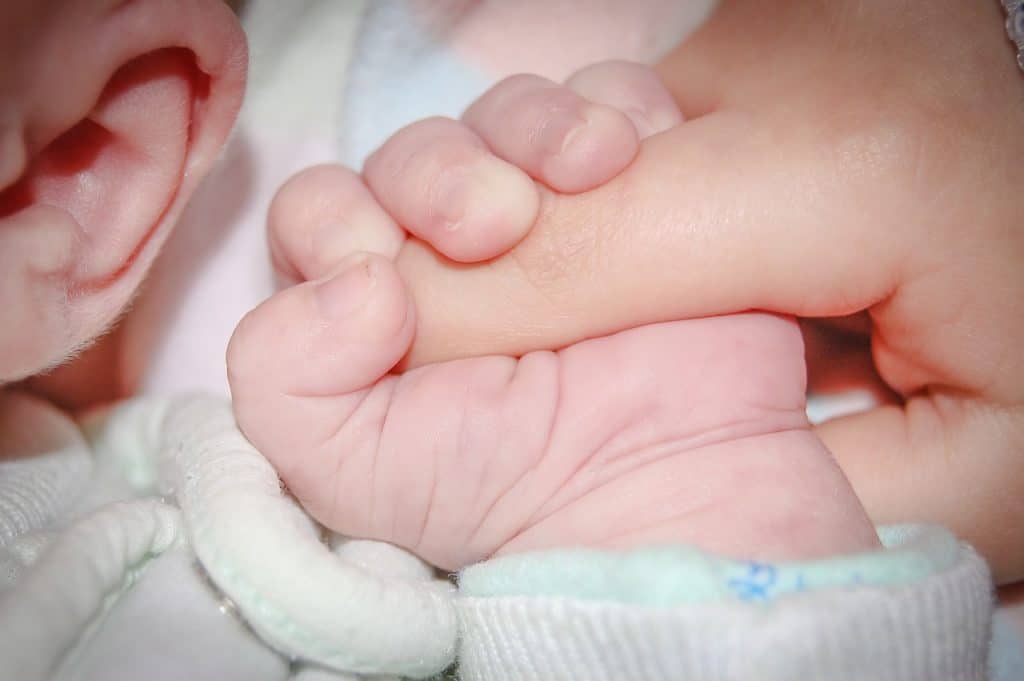
CORD BLOOD BANKING IN LOUISIANA
What is Cord Blood banking in Louisiana?
Cord blood banking is a procedure that has been gaining increased attention in the medical world for its potential to help treat a range of diseases and medical conditions.
In simple terms, cord blood banking involves collecting and storing stem cells from a newborn’s umbilical cord. These stem cells are rich in potential and can be used to help treat a range of illnesses, including certain cancers, blood disorders, and genetic diseases. As a result, many expectant parents are now considering cord blood banking as a way to secure their child’s health for the future.
The process of banking umbilical cord blood involves collecting the blood immediately after birth and sending it to a specialized facility for processing and storage.
The cost of storage can vary depending on the service provider and the length of storage time chosen. There are many factors to consider when deciding whether to bank cord blood, including family medical history and the potential future use of the stem cells.
What is cord and tissue banking in Louisiana?
Cord tissue banking involves the collection and storage of the cord tissue, which is the gel-like material that surrounds the blood vessels in the umbilical cord. This tissue is rich in stem cells, which are the building blocks of the body’s immune and blood systems. The stem cells found in cord tissue are different from those found in cord blood, making it a valuable resource for future treatments.
Umbilical cord blood and tissue collection in Louisiana?
Umbilical cord blood and tissue are collected immediately after birth via a non-invasive and pain-free procedure.
The umbilical cord is clamped and cut as usual, but instead of discarding the placenta and umbilical cord, they are collected by a trained healthcare professional.
The blood is extracted from the cord using a sterile needle and collected into a specialized bag with anticoagulants to prevent clotting. The tissue is collected by cutting a small piece of the cord and placing it into a sterile container.
Both cord blood and tissue are then transported to a laboratory for processing and storage.
This procedure is a safe and effective way to collect valuable stem cells that can be used for future medical treatments.


Umbilical cord blood and tissue storage near Louisiana
Umbilical cord blood and tissue are valuable sources of stem cells, which have the potential to treat a wide range of diseases.
To ensure the preservation of these stem cells, they are collected at the time of birth and stored in specialized facilities.
The most common method of storage is cryopreservation, where the stem cells are slowly frozen and stored in liquid nitrogen at -196°C.
This ensures that the stem cells can be retrieved and used for medical purposes for many years to come. Additionally, many cord blood banks also offer the option to store the umbilical cord tissue, which contains a different type of stem cell that can also be used for medical treatments.
Overall, proper storage of umbilical cord blood and tissue is crucial for their potential use in future medical treatments.
Louisiana is a land of enchantment, rich in history and steeped in cultural heritage. Known for its distinctive blend of French, African, and Spanish influences, this southern state is home to bustling cities, picturesque towns, and strikingly beautiful landscapes. Its unique mix of natural wonders, sophisticated urban centers, and diverse cultural experiences attract countless visitors each year. From the legendary jazz of New Orleans to the bayou-lined wetlands of the Atchafalaya Basin, Louisiana is a place like no other.
For travelers seeking something different, Louisiana is a must-visit destination. This diverse state offers endless opportunities for exploration and intrigue. Whether strolling through the French Quarter, sampling Cajun cuisine, or catching a glimpse of an alligator in the wild, Louisiana offers something for everyone.
In this blog post, we will delve deeper into the many facets of this captivating state. We will explore its rich history, vibrant culture, and amazing attractions. We will take you on a journey through its
1. Louisiana is a state located in the southern region of the United States.
Louisiana, the Pelican State, is a prominent state located in the southern region of the United States. Sharing its boundaries with Texas to the west, Arkansas to the north, and Mississippi to the east, Louisiana is a hub of diverse cultures, rich history, and beautiful landscapes. The state covers an area of 52,378 square miles and has a population of over 4.6 million, making it the 25th most populous state in the country. From the vibrant nightlife of New Orleans to the spectacular wildlife of the Atchafalaya Basin and the mouth-watering Cajun and Creole cuisine, Louisiana offers an unparalleled mix of cultural and natural wonders.
2. The state is known for its rich history, cultural diversity, and unique cuisine.
Louisiana is a state located in the southern region of the United States, bordered by Arkansas to the north, Mississippi to the east, Texas to the west, and the Gulf of Mexico to the south. Louisiana is known for its rich history, cultural diversity, and unique cuisine. The state’s history is a blend of French, Spanish, African, and Native American cultures, and its cities are filled with beautiful historic sites, museums, and architecture. In addition to its historical and cultural significance, Louisiana’s cuisine is one of the most distinctive and flavorful in the country. From gumbo and jambalaya to po’boys and beignets, the state is renowned for its rich and varied culinary traditions that showcase its unique blend of cultural influences. Overall, Louisiana offers visitors and residents alike a vibrant and diverse experience, steeped in history, culture, and food.
3. The capital of Louisiana is Baton Rouge, and the largest city is New Orleans.
Louisiana is a state situated in the southern United States with a population of approximately 4.6 million people. The state is renowned for its lively music, unique cuisine, and Mardi Gras celebrations. The capital of Louisiana is Baton Rouge, which has a population of over 220,000 people. It is also the second-largest city in the state, only behind New Orleans, which has a population of over 390,000 people. With its rich history, beautiful architecture, and diverse culture, Louisiana is a unique and exciting destination for tourists and residents alike.
4. The state’s economy is driven by industries such as agriculture, manufacturing, and tourism.
Louisiana has a vibrant economy driven by a diverse range of industries, including agriculture, manufacturing, and tourism. The state’s agriculture industry contributes significantly to its economy, with Louisiana being a major producer of rice, sugarcane, cotton, soybeans, and seafood. The manufacturing industry also plays a critical role and includes chemical production, food processing, and petroleum refining. Additionally, the tourism industry is essential to Louisiana’s economy, drawing visitors from around the world to experience the state’s unique culture, food, and music. Overall, the combination of these key industries helps to drive economic growth and create job opportunities throughout Louisiana.
5. Louisiana has a humid subtropical climate, with hot summers and mild winters.
Louisiana has a humid subtropical climate, characterized by hot summers and mild winters. This climate type is defined by the combination of frequent rainfall and high annual temperatures. Summers in Louisiana are typically hot and humid, with average temperatures ranging from the high 80s to low 90s Fahrenheit. Winters are generally mild, with average temperatures ranging from the mid-50s to low 60s Fahrenheit. Despite the mild temperatures, Louisiana experiences occasional cold snaps, and some areas of the state are occasionally subject to freezing temperatures and snowfall. The state’s climate is influenced by its proximity to the Gulf of Mexico, which brings large amounts of moisture and humidity to the region.
6. The state is home to several major universities, including Louisiana State University and Tulane University.
Louisiana is a state in the southern United States, known for its rich culture, diverse cuisine, and vibrant music scene. It is also home to several major universities, including Louisiana State University (LSU) and Tulane University. LSU, located in Baton Rouge, is the flagship institution of the Louisiana State University System and offers a wide range of undergraduate, graduate, and professional degree programs. Tulane University, located in New Orleans, is a private research university known for its strong programs in business, law, and medicine. Both universities attract students from all over the world and contribute significantly to the state’s economy and intellectual capital.
7. Louisiana is a popular tourist destination, with attractions such as the French Quarter in New Orleans, the Louisiana State Capitol in Baton Rouge, and the National World War II Museum.
Louisiana is a state located in the southern region of the United States, and it has earned its reputation as a popular tourist destination. Visitors flock to Louisiana to experience its rich culture, history, and natural beauty. Among the state’s most popular attractions are the vibrant and historic neighborhoods of New Orleans, including the famed French Quarter. Visitors can stroll through the streets and try the famous Creole cuisine or enjoy a jazz concert. Another popular destination is the Louisiana State Capitol in Baton Rouge, known for its elegant architecture and impressive views of the Mississippi River. The National World War II Museum in New Orleans is another must-visit attraction, which offers an immersive and engaging experience, providing a comprehensive understanding of the events leading up to and during the war. These are just a few examples, Louisiana offers plenty of activities and destinations for all types of travelers to explore and enjoy.
8. The state is also known for its music, including jazz, blues, and zydeco.
Louisiana is widely known for its diverse music culture, which includes jazz, blues, and zydeco. Jazz, which originated from New Orleans, has been a crucial part of Louisiana’s music scene for over a century. Blues music, which was initially developed in the African American communities of the Mississippi Delta, has also played a significant role in Louisiana’s cultural heritage. Additionally, zydeco, which is a mixture of Cajun music and rhythm and blues, is a genre exclusive to Louisiana. The state proudly celebrates its music through various festivals, such as the New Orleans Jazz & Heritage Festival, the Louisiana Cajun-Zydeco Festival, and the Baton Rouge Blues Festival. These festivals reflect the state’s cultural diversity, rich heritage, and unique musical heritage. Louisiana’s music culture continues to flourish and inspire music enthusiasts worldwide, making it a true treasure of the Southern United States.
9. Louisiana has a diverse population, with a mix of African American, Creole, Cajun, and Native American cultures.
Louisiana is a culturally rich state, with a diverse population made up of a mix of African American, Creole, Cajun, and Native American cultures. Each of these groups has played a significant role in shaping Louisiana’s unique history and heritage. The Creole culture, for example, originated from a blend of African, Indian, and European influences, and is known for its flavorful cuisine and unique traditions. The Cajun culture, on the other hand, is rooted in French Canadian culture and is often associated with country life and music. Louisiana’s African American population has also made significant contributions to the state’s identity, notably in the realm of jazz music that emerged in cities such as New Orleans. Finally, Native American tribes, such as the Choctaw and Houma, continue to maintain their unique cultural practices and language in Louisiana. Together, the diverse cultures that make up Louisiana create a vibrant and distinct cultural landscape that attracts visitors from all over the world.
10. Visitors to Louisiana can expect to
10. Visitors to Louisiana can expect to experience a unique blend of culture, history, and natural beauty. The state is known for its vibrant music scene, world-renowned cuisine, and colorful festivals. Visitors can explore historic sites, such as the French Quarter in New Orleans and plantations along the Mississippi River. Nature lovers can wander through swamp lands, where they may spot alligators, and take scenic bayou tours. Louisiana also boasts a diverse range of museums, art galleries, and theaters, providing cultural enrichment to visitors. Overall, visitors to Louisiana are sure to be swept up in a rich and distinct culture that can only be found in this Southern state.
In conclusion, Louisiana is a state rich in history, culture, and natural beauty. From the vibrant city of New Orleans, with its lively music, delicious cuisine, and colorful architecture, to the quiet bayous and plantations that dot the rural landscape, Louisiana has something to offer everyone. It’s a state with a complex and fascinating past, both before and after it became a part of the United States. The people of Louisiana are proud of their heritage and have created a unique identity that sets them apart from other states. Anyone who visits Louisiana is sure to come away with a deeper appreciation of its history, culture, and people.

Stem cells, umbilical cord blood and tissue collection in Louisiana
Labor and Delivery Nurse Reflecting on Cord Blood
Title: “From My Side of the Bed: What I Wish More Parents Knew About Cord Blood”
I’ve been a labor and delivery nurse for 17 years.
That’s hundreds of births a year, thousands of families, and more birth stories than you could ever imagine. I’ve watched new parents hold their babies for the first time with shaking hands and tear-filled eyes. I’ve cleaned up more bodily fluids than I care to count, caught babies when doctors didn’t make it in time, and whispered encouragement to mothers who didn’t think they had one more push in them.
And through all of it — all the mess and the magic — there’s one thing I wish more families talked about before they rolled into the hospital at 38 weeks:
Cord blood.
What Parents Don’t Always Know
Cord blood banking is one of those topics that somehow slips through the cracks. It’s not in the baby name books. It’s not on your registry. It’s rarely covered at baby showers between diaper games and cake.
But it’s important.
Cord blood is the blood that remains in the umbilical cord and placenta after birth. It’s rich in something incredible: hematopoietic stem cells — the same kind used in life-saving treatments for over 80 diseases, including leukemia, lymphoma, sickle cell anemia, and immune disorders.
And it’s only available for a moment. One moment. Right after your baby is born.
Umbilical cord blood and tissue storage near Louisiana
You Only Get One Chance
Here’s what it looks like from my side of the bed:
A baby is born. They cry, we all cheer. The cord is clamped. Within minutes, if the parents have decided ahead of time, a trained collector — sometimes me, sometimes a specialized team — will extract the cord blood into a sterile kit.
It’s fast. Painless. The baby doesn’t even notice.
But if no one’s prepared? If no one talked about it in advance?
It’s gone. We discard the cord and placenta as medical waste, and with it, potentially life-saving stem cells.
That’s the hardest part for me: knowing how easy it would have been to keep the option open — but no one brought it up in time.
CORD BLOOD REGISTRY IN LOUISIANA
Private or Public — Either Is Valuable
A lot of families ask me what I would do. My honest answer?
That depends.
Public donation is free, and it’s a beautiful act of generosity. Your baby’s cord blood goes into a national registry and might be used to save a stranger’s life.
Private banking costs money, but it means storing the cord blood for your own family. If you have a medical history that might require it — or if your child is at high risk — it can be a smart choice.
Either way, the most important thing is that you make a decision in time. You can’t bank or donate after the fact.
But Nurse, Is It Safe?
Yes. 100% safe.
The process doesn’t hurt the baby. It doesn’t interfere with bonding. It’s done after the cord is clamped — and yes, we can still do delayed cord clamping in most cases.
It’s one of the few medical decisions where there’s no risk to the child, and yet the potential benefit is massive.
What I Tell My Friends
When my sister was pregnant, this was one of the first things I talked to her about. Not strollers. Not sleep training. Not swaddling techniques. I told her about the families I’d seen — the ones who chose to donate, the ones who stored for peace of mind, and the ones who didn’t get the chance because no one told them in time.
She registered for public donation at 32 weeks. And when her daughter was born, I got to be the one who collected that tiny, powerful gift. I remember labeling it and thinking: Somewhere, someday, this might change someone’s life.
That’s pretty special.
What is Cord Blood banking in Louisiana
?
What to Ask Before Your Due Date
Does my hospital support public donation?
How early do I need to register for private banking?
Can I still do delayed cord clamping?
Is there a cost involved?
Who performs the collection?
Please — bring these questions to your next prenatal visit. You’ll be surprised how many providers are happy to talk about it but just don’t bring it up unless you ask.
The Bottom Line From a Nurse Who’s Seen It All
You will make a thousand decisions as a parent.
Some will be hard. Some will keep you up at night. Some will be about diaper brands or baby food or sleep schedules. And some will carry the weight of science, hope, and maybe even life.
Cord blood banking is one of those.
It’s not about guilt. It’s about knowing your options. It’s about choosing whether to preserve something your baby only has once — a resource that could help them, a sibling, or a stranger down the road.
From my side of the bed, I’ve seen miracles start with that tiny collection.
And I’ve seen the regret when families wish they’d known sooner.
So this is me — your L&D nurse — whispering one more thing between pushes:
Look into it. Learn about it. Decide for yourself.
Because birth is the beginning of everything.
And sometimes, it’s also the beginning of something bigger.
Keywords: cord blood labor nurse, nurse view cord blood banking, delivery room stem cell story, L&D nurse cord blood advice, cord blood explained by medical staff, cord blood collection explained, cord blood donation hospital, delayed cord clamping and banking, private vs public cord blood nurse, real birth cord blood moment
Table of Contents
Toggle